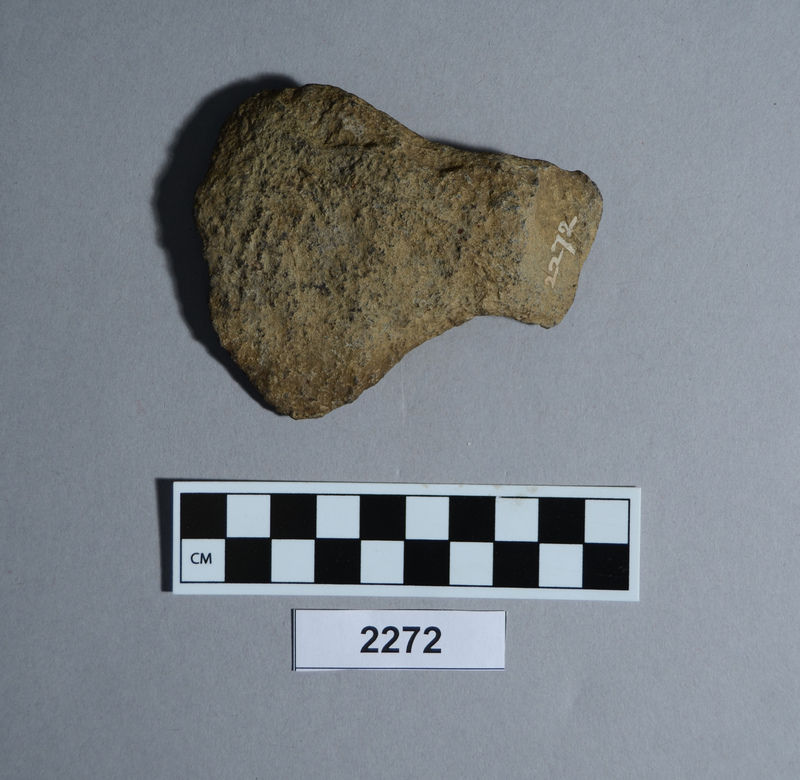Adze (uncertain)
Scraper (uncertain)
2272
From: Japan | Honshu | Kanagawa Prefecture | Yokohama
Curatorial Section: Asian
| Object Number | 2272 |
| Current Location | Collections Storage |
| Culture | Late Paleolithic (uncertain) | Jomon (uncertain) | Japanese |
| Provenience | Japan | Honshu | Kanagawa Prefecture | Yokohama |
| Period | Late Paleolithic (uncertain) | Jomon (uncertain) |
| Date Made | Late Paleolithic, Japan - Jomon |
| Section | Asian |
| Materials | Stone |
| Technique | Flaked | Chipped |
| Inscription Language | English Language |
| Description | Adze. Bifacially chipped. Wide rounded end with cutting edge. Possibly a scraper or an adze. Dark in color. Unground adzes may have been used as a hoe for digging and harvesting roots, bulbs and other wild plants. They could also have served as a woodworking tool. They were made from pebbles which were carefully selected for their shape. The cutting edge was created by chipping at either one or both sides to form a sharp edge. The opposite end is usually thicker. Unground adzes appear as early as the Late Paleolithic Period. Bowtie shaped adzes appear in connection with Jomon sites. 2272 and 2281 are broken pieces. In their original form they may have been bowtie shaped. A date of Late Paleolithic to Jomon is assigned to these two pieces until further comparisons with excavated examples can be made. |
| Credit Line | Gift of Francis C. Macauley, Esq., 1890 |
| Other Number | None - Field No SF | None - Other Number |
Report problems and issues to digitalmedia@pennmuseum.org.


